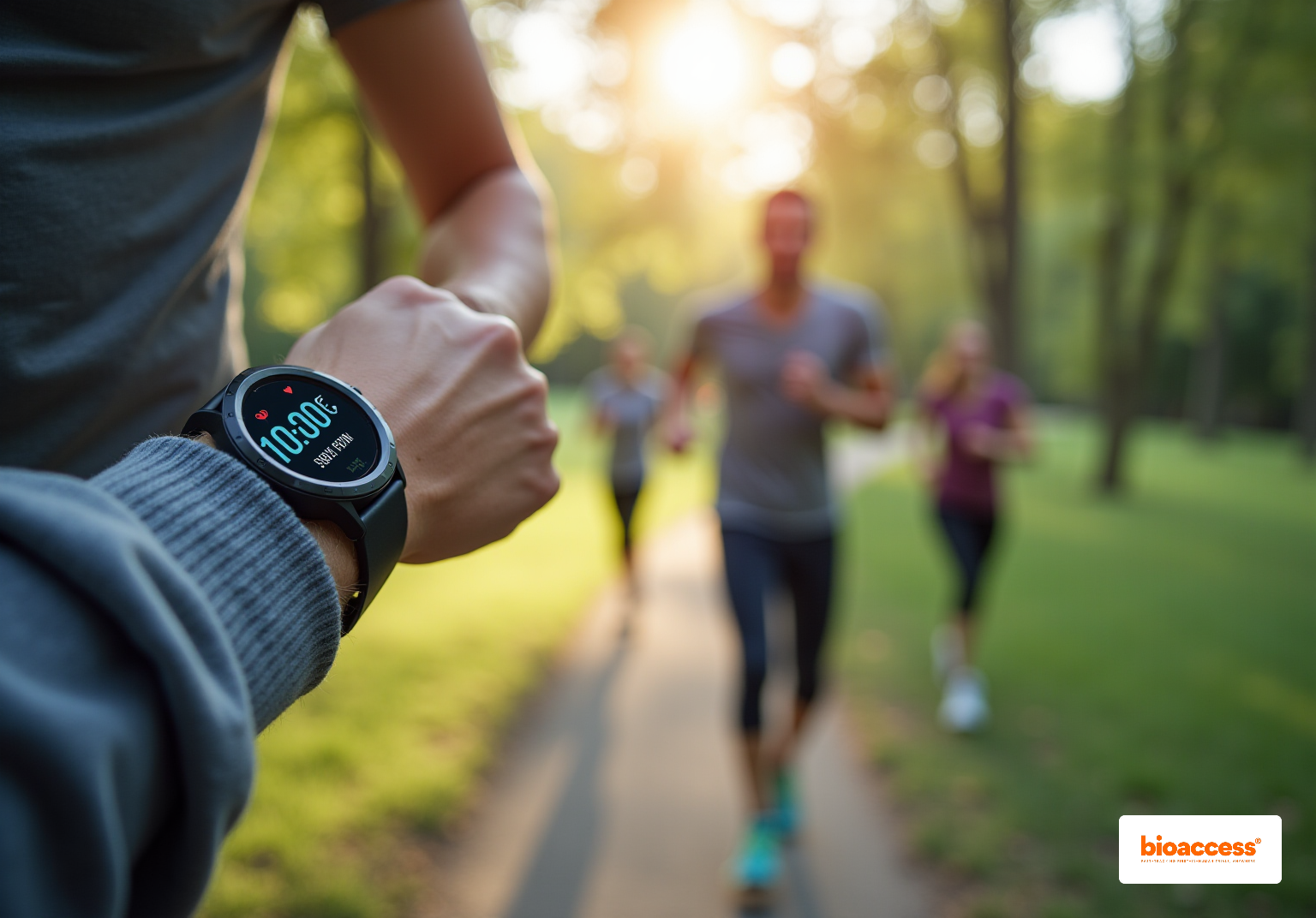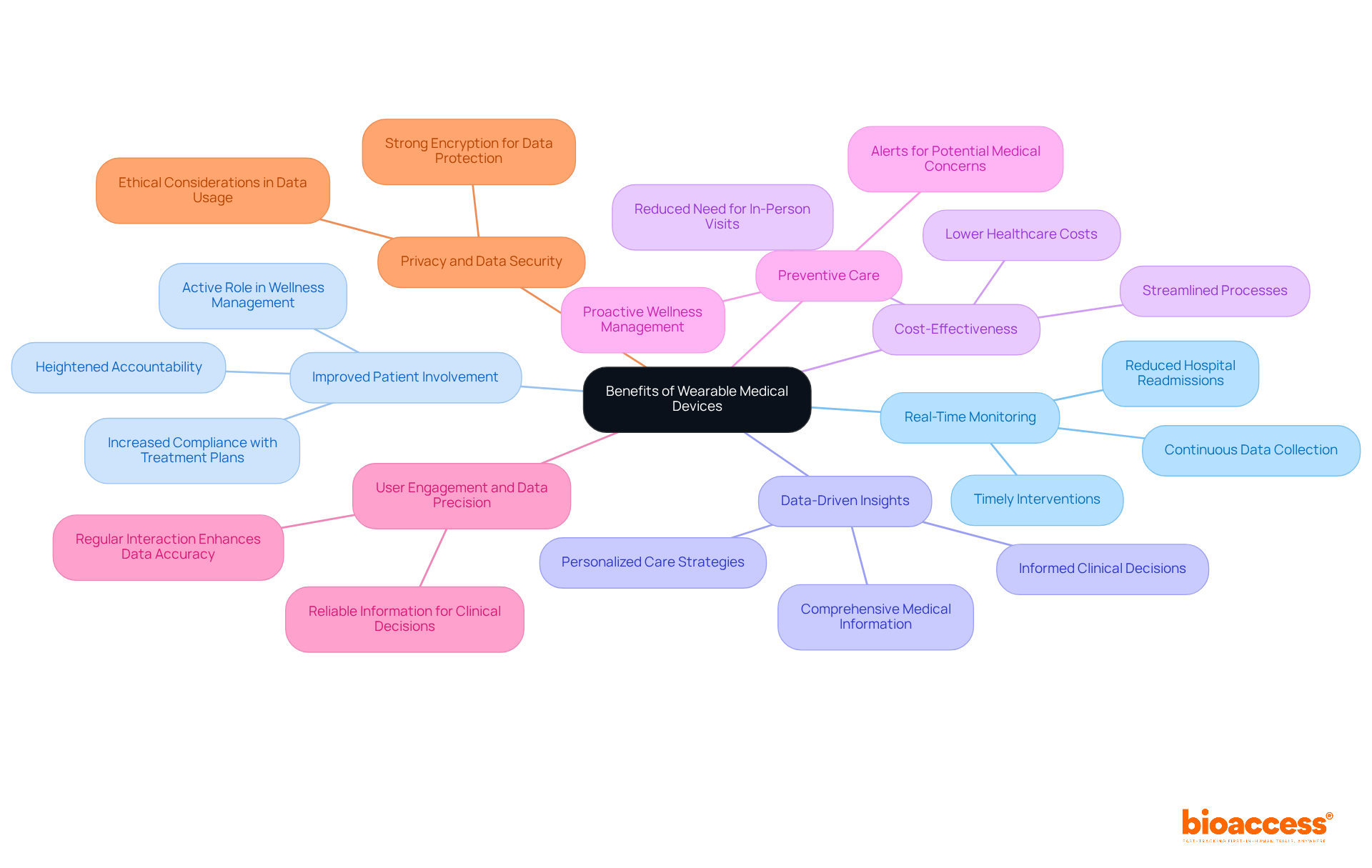


The article emphasizes the features, benefits, and suitability of medical wearable devices within the healthcare sector, underscoring their pivotal role in chronic disease management, fitness, and patient engagement. It elaborates on how these devices facilitate real-time monitoring and data-driven insights, which significantly enhance patient outcomes and catalyze a transition toward personalized healthcare solutions.
Medical wearable devices are revolutionizing the healthcare landscape, presenting unparalleled opportunities for continuous health monitoring and personalized patient care. As these innovative tools gain momentum, they bring forth a multitude of benefits, ranging from enhanced chronic disease management to the promotion of preventive care. However, with an abundance of options available, how can individuals and healthcare providers discern which devices are best suited to their unique health needs and conditions? This article explores the features, advantages, and appropriateness of leading medical wearables, equipping readers with the insights necessary to navigate this evolving field effectively.
Medical wearable devices have emerged as revolutionary tools in healthcare, enabling continuous tracking of patients' wellness metrics, especially for chronic conditions such as diabetes, hypertension, and heart disease. These medical wearable devices include everything from basic fitness monitors to sophisticated medical-grade sensors capable of tracking vital signs like heart rate, blood pressure, and glucose levels. The integration of advanced technologies, including AI and machine learning, has significantly enhanced their capabilities, enabling real-time data collection and analysis.
By 2025, the market for health-monitoring devices is projected to expand considerably, driven by increasing consumer interest in health tracking and preventive care. The global market for medical devices is anticipated to grow at a CAGR of 17.2% from 2023 to 2032, indicating a broader shift towards personalized medicine, where patient data is leveraged to tailor healthcare interventions effectively. Notably, the U.S. medical technology market was valued at approximately $11.45 billion in 2023, suggesting substantial potential for growth.
The COVID-19 pandemic has markedly heightened interest in remote medical monitoring, accelerating the adoption of medical wearable devices. Approximately one-third of U.S. adults now utilize medical wearable devices or applications, underscoring the rising consumer engagement with these products. Regulatory advancements, such as the FDA's approval of innovations like the Apple Watch's EKG feature, emphasize the increasing acceptance of technology in clinical settings.
Furthermore, the therapeutic devices segment is expected to experience the fastest growth in the coming years, indicating emerging trends within the market. As these devices continue to evolve, the importance of data privacy and security remains paramount, especially in managing sensitive medical information. Expert insights indicate that these devices not only enhance patient engagement but also support improved clinical decision-making by providing healthcare professionals with timely insights into patients' health conditions. The ongoing advancements in personal technology are poised to further solidify their role as essential tools in modern healthcare.

Leading medical wearable devices are characterized by several essential features that significantly enhance usability and effectiveness in healthcare.
As of 2025, innovations in portable technology, particularly in medical wearable devices, continue to evolve, with advancements in sensor accuracy and data analytics paving the way for more sophisticated health monitoring solutions. The worldwide market for medical smart gadgets is forecasted to expand from 275 million units to almost 440 million units by 2024, indicating the rising demand for these technologies in healthcare. Furthermore, portable technology is anticipated to save the healthcare system more than $200 billion, emphasizing its economic advantages.

Wearable medical devices present a multitude of advantages for patients and healthcare providers alike:
Real-Time Monitoring: Continuous data collection enables timely interventions, which are essential for effectively managing chronic conditions. Research shows that individuals utilizing a medical wearable device for real-time tracking achieve better outcomes, resulting in a significant decrease in hospital readmissions.
Improved Patient Involvement: Medical wearable devices enable patients to take an active role in their wellness management, encouraging greater compliance with treatment plans. Research indicates that over 90% of participants in studies reported heightened accountability for their well-being when using a medical wearable device.
Data-Driven Insights: Healthcare providers gain access to comprehensive medical information from a medical wearable device, facilitating more informed clinical decisions and personalized care strategies. This data-driven method improves the quality of care, as providers can customize interventions based on real-time individual metrics collected from a medical wearable device. The combination of medical wearable devices and analytics tools assists in recognizing patterns in individual health over time, further enhancing care strategies.
Cost-Effectiveness: By enabling remote monitoring, medical wearable devices significantly reduce the need for in-person visits, which in turn lowers healthcare costs for both patients and providers. The integration of medical wearable devices into care plans has been shown to decrease overall healthcare expenditures by streamlining processes and minimizing unnecessary appointments.
Preventive Care: A medical wearable device can alert users to potential medical concerns before they worsen, promoting proactive wellness management. For example, a medical wearable device that tracks vital signs can alert users to irregularities, enabling early intervention and improved health outcomes.
User Engagement and Data Precision: Regular interaction with a medical wearable device enhances data precision and reliability, ensuring that healthcare providers can trust the information gathered for clinical decisions.
Privacy and Data Security: It is essential to apply strong encryption during data transmission and storage to protect personal information, addressing ethical considerations related to technology that can be worn.
In summary, the incorporation of medical wearable devices into healthcare not only boosts user involvement but also enhances chronic illness management, ultimately resulting in improved wellness outcomes and more effective care delivery.

The suitability of a medical wearable device is tailored to individual health needs and conditions, reflecting its diverse applications.
Chronic Disease Management: Devices such as continuous glucose monitors (CGMs) and heart rate monitors are essential for patients managing diabetes or cardiovascular issues. These devices provide crucial real-time information, allowing for proactive modifications to treatment plans and enhancing overall wellness outcomes. As Harjeevan Singh Kang notes, a medical wearable device can empower individuals by assisting with diagnosis and self-monitoring, which is vital for chronic disease management.
Fitness and Wellness: Fitness trackers cater to individuals aiming to enhance their health and fitness levels. Equipped with features like step counting, activity tracking, and heart rate monitoring, these gadgets have been shown to significantly improve physical activity levels and encourage healthier lifestyles. For instance, studies indicate that users of fitness trackers can increase their daily activity by an average of 40 meters in six-minute walk tests, demonstrating their effectiveness in promoting movement.
Elderly Care: Wearables designed specifically for seniors often incorporate features such as fall detection and emergency alerts. These functionalities enhance safety and independence, allowing older adults to maintain an active lifestyle while providing peace of mind to caregivers and family members. Recent advancements in portable technology have led to the creation of gadgets that track vital signs and activity levels, ensuring prompt actions when necessary. However, challenges such as user engagement and the accuracy of medical wearable devices continue to pose obstacles in this area.
Mental Wellness Monitoring: Certain devices are capable of tracking stress levels and sleep patterns, providing valuable insights for managing mental wellness conditions. By offering immediate feedback, these tools enable individuals to take proactive measures in their mental well-being, fostering a stronger sense of control over their wellness. The potential for medical wearable devices to aid in monitoring mental well-being is increasingly recognized, as they can assist individuals in managing anxiety and stress effectively.
Post-Surgery Recovery: Medical wearable devices play a crucial role in monitoring recovery metrics for patients post-surgery. They ensure adherence to rehabilitation protocols by tracking physical activity and vital signs, which can lead to improved recovery outcomes and reduced rehospitalization rates. For example, home-based cardiac rehabilitation programs utilizing wearables have demonstrated significant improvements in cardiovascular health metrics, underscoring their importance in recovery processes.

Medical wearable devices signify a transformative advancement in healthcare, enabling continuous monitoring of vital health metrics and enhancing patient engagement. These devices not only furnish critical data for managing chronic conditions but also empower individuals to take charge of their health through personalized insights and timely interventions.
The article underscores several key features that characterize leading medical wearables, including:
The benefits of these devices extend to both patients and healthcare providers, promoting:
Moreover, the adaptability of wearable devices for diverse health needs—from chronic disease management to mental wellness monitoring—highlights their versatility and significance in modern healthcare.
The ongoing evolution of medical wearable devices is poised to reshape patient care, emphasizing the necessity for continued innovation and integration of technology within healthcare settings. As the market for these devices expands, it is imperative for stakeholders to prioritize data security and privacy, ensuring that advancements in wearable technology culminate in enhanced health outcomes and a more proactive approach to wellness management. Embracing these devices not only benefits individual patients but also contributes to a more efficient and effective healthcare system overall.
What are wearable medical devices?
Wearable medical devices are tools that enable continuous tracking of patients' wellness metrics, particularly for chronic conditions like diabetes, hypertension, and heart disease. They range from basic fitness monitors to advanced medical-grade sensors that track vital signs such as heart rate, blood pressure, and glucose levels.
How has technology influenced wearable medical devices?
The integration of advanced technologies like AI and machine learning has enhanced the capabilities of wearable medical devices, allowing for real-time data collection and analysis.
What is the projected market growth for health-monitoring devices?
The market for health-monitoring devices is projected to expand significantly by 2025, with a global growth rate anticipated at a CAGR of 17.2% from 2023 to 2032, indicating a shift towards personalized medicine.
What was the value of the U.S. medical technology market in 2023?
The U.S. medical technology market was valued at approximately $11.45 billion in 2023.
How has the COVID-19 pandemic impacted the use of wearable medical devices?
The COVID-19 pandemic has increased interest in remote medical monitoring, leading to a rise in the adoption of medical wearable devices, with about one-third of U.S. adults now using them.
What role do regulatory advancements play in wearable medical devices?
Regulatory advancements, such as the FDA's approval of features like the Apple Watch's EKG, highlight the growing acceptance of technology in clinical settings.
Which segment of wearable medical devices is expected to grow the fastest?
The therapeutic devices segment is expected to experience the fastest growth in the coming years.
Why is data privacy and security important in wearable medical devices?
Data privacy and security are crucial in managing sensitive medical information, as these devices handle personal health data.
How do wearable medical devices benefit healthcare professionals?
Wearable medical devices enhance patient engagement and support improved clinical decision-making by providing healthcare professionals with timely insights into patients' health conditions.